With a few exceptions, we generally wear our sneakers straight out of the box without giving a second thought to where or how they got their names. Some models simply use codes to signify a style, others take inspiration from towns, cities and countries, while few get christened to commemorate an iconic event or use a specific name to denote a collaboration. For the aforementioned exceptions, well, they got their names in a totally different way altogether. Here’s how some legendary sneakers got their names.
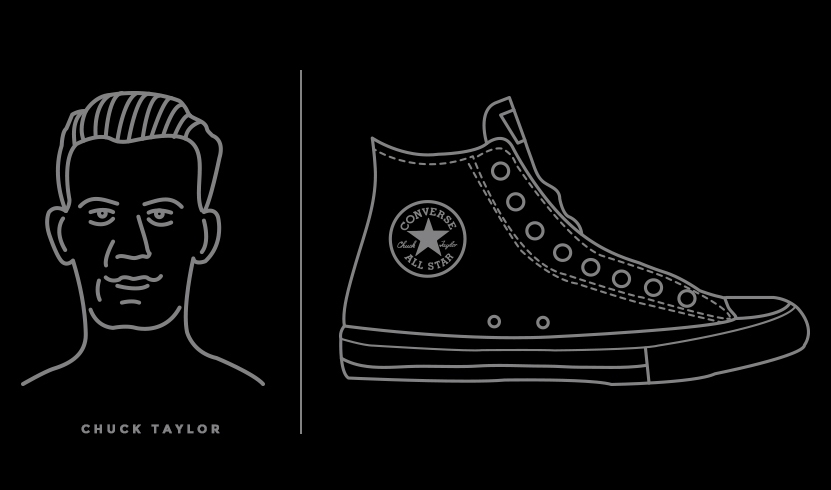
Converse Chuck Taylor
Let’s start with the most iconic of them all. This model is a rare breed when it comes to sneaker names, as it’s pretty common knowledge that Chuck Taylor was indeed a basketball player. His main area of expertise, however, was innovations in marketing. In his early twenties, Taylor went to the Converse headquarters in Chicago in search of a job. He was hired on the spot, and within a few years his name was added to the boot he had a hand in perfecting. His name lives on through 250,00+ pairs sold per day.
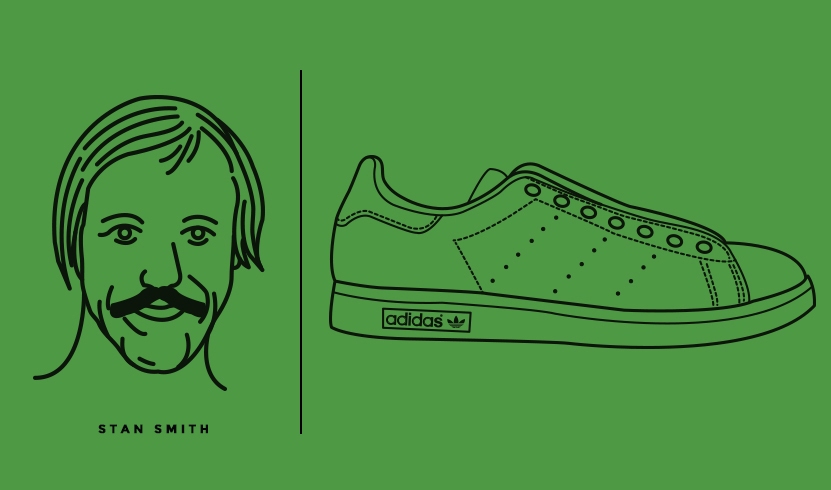
adidas Stan Smith
The quintessential white sneaker gets its name thanks to the American tennis player of the 1960s-80s. Ever copied but rarely bettered, the classic streamline, but slightly chunky silhouette, was originally named after a French tennis player, Robert Haillet, but after his retirement in the early 70s the name was dropped. A new partnership was forged soon after with Stanley Roger “Stan” Smith, and the first all leather tennis shoe started to gain momentum—soon being seen away from the court with popular musicians, actors and the “everyday man” all rocking them. After an over-saturation in the early 2000s, the sneaker fell out of favor, but with a relaunch in 2014, in more color options and a string of collaborations, the Stan Smith has reaffirmed its place in the sneaker Hall of Fame.

Nike Roshe Run
There’s a fair bit of debate around the official pronunciation of this Nike minimal runner, but what we can share is how their name came to be. Nike footwear designer Dylan Raasch was given the job of creating a brand new running (not that we’ve seen many people running in them) sneaker, available for under $100, while still keeping up with the brand’s technological advances. Raasch considered himself as a longtime lover of traditional meditation, and an aspiring “Zen Master.” This led his research to the original term of that honor—Roshi. After a quick spelling change for legal reasons, the lightweight, breathable and almost slipper-like modern sneaker was born.
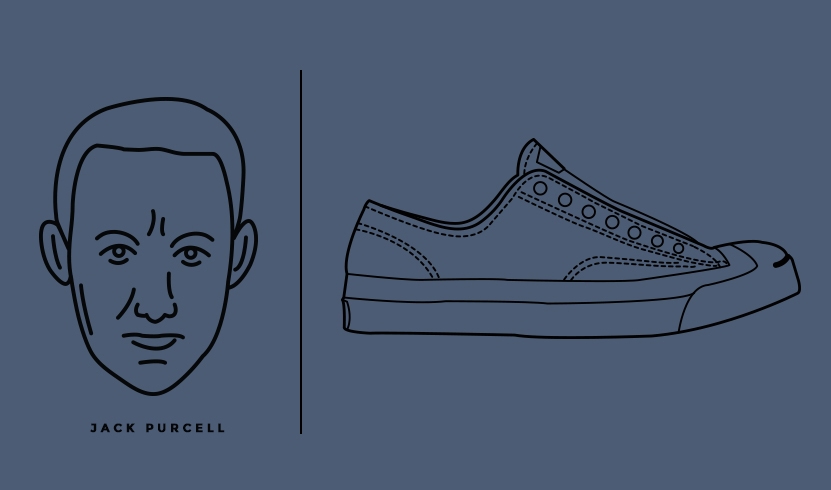
Converse Jack Purcell
The Converse Jack Purcell is seen in a different light as the Chuck Taylor. Not as commonly recognizable as the classic basketball boot, but still loved all around the world—be that for its timeless qualities. The man behind the sneaker was a world class badminton player, hailing from Ontario, Canada, who was crowned World Champion in ’33. The even more impressive stat is that he was undefeated until his retirement in 1945. His success was undoubtedly down to skill on the court, and the self-developed training shoe, created in partnership with BF Goodrich in 1935. Converse later bought the exclusive rights to the shoe in the 1970s.
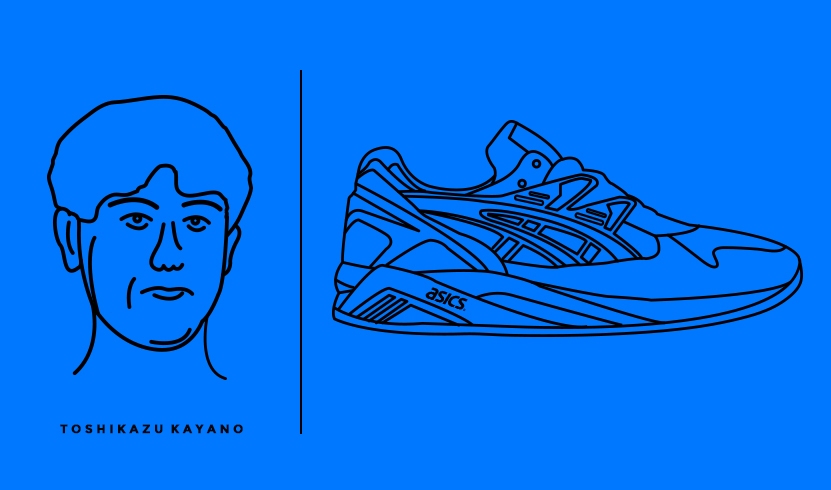
ASICS Kayano
In 1992, and only five years into his career working for the Japanese footwear company, a young designer by the name of Toshikazu Kayano set about developing a new style of high performance running shoe. The concept was to create a totally fresh design, using the latest technology, while still providing existing customers something they’d instantly love. After some time working on the new design, and several failed attempts at pitching, the ASICS team sent Kayano over to America to gain inspiration from the US Product Marketing team. Finally, after sketching designs on a napkin during a late night team dinner, the new concept running shoe was born. The sketch was an instant hit, and the shoe was named after the designer thereafter.
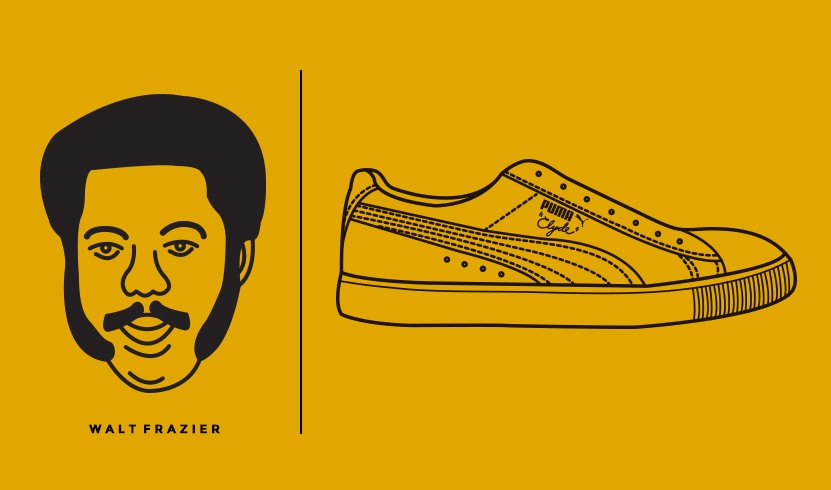
Puma Clyde

Nike Cortez
The Nike Cortez, featuring the iconic bright red swoosh logo, was released at the height of the 1972 Olympics, held in Germany. It was thrust into the limelight and into peoples’ homes via millions of TV screens around the world. The original ideas for the Cortez were underway in 1968. Designed for support and durability, they gained their recognizable name from somewhere entirely different. So the story goes: the origins of the namesake can be traced back to the famous Spanish conquistador, Hernando Cortez, who led the march that caused the fall of the Aztec Empire. Why Nike’s co-founder decided on this name is up for debate, but we’d take a reasoned guess that it was down to Cortez’s conquering attitude and drive to win.




